|
 Exoplanetary System Offers Clues To Disturbed Past
Exoplanetary System Offers Clues To Disturbed PastBaltimore MD (SPX) May 25, 2010 Astronomers are reporting the discovery of a planetary system way out of tilt, where the orbits of two planets are at a steep angle to each other. This surprising finding will impact theories of how multi-planet systems evolve, and it shows that some violent events can happen to disrupt planets' orbits after a planetary system forms, say researchers. "The findings mean that future studies of exoplanetary systems will be more complicated. Astronomers can no longer assume all planets orbit their par ... read more |
. |
|
|
Free Space, Earth, Energy And Military Newsletters - Delivered Daily |
| . | . |
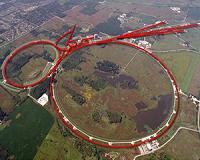 Evidence For Why We Exist | .. |
 Water, Water Everywhere, But Not All Drops Have Life | .. |
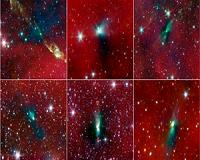 How Binary Stars May Form | .. |
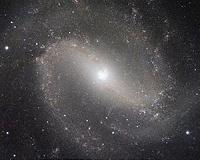 Clear New View O A Classic Spiral | .. |
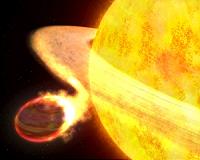 Hubble Finds A Star Eating A Planet |
| .. |
Atomic pioneer Edwin Kintner dead at 90 Exeter, N.H. (UPI) May 21, 2010
Exeter, N.H. (UPI) May 21, 2010 Nuclear pioneer Edwin Kintner, who helped develop a reactor for the first U.S. atomic-powered submarine, died at age 90 in Exeter, N.H., his family said. Kintner died May 7 of prostate cancer, his son Eric told The New York Times in a story published Friday. Edwin Kintner worked on reactor technology used to power the Nautilus, the first U.S. atomic submarine, which had its maide ... more First Results Dealing With The Impact Of A Celestial Body On The Planet Jupiter  Barcelona, Spain (SPX) May 21, 2010
Barcelona, Spain (SPX) May 21, 2010The Planetary Sciences Group at the UPV/EHU-University of the Basque Country with its headquarters at the Faculty of Engineering in Bilbao and led by Professor Agust�n S�nchez Lavega, has published the first results of research into one of the recent events that has sparked off maximum interest in the world of astronomy: the impact of a large-sized celestial body on the planet Jupiter last July. ... more Big Mystery: Jupiter Loses A Stripe  Huntsville AL (SPX) May 21, 2010
Huntsville AL (SPX) May 21, 2010In a development that has transformed the appearance of the solar system's largest planet, one of Jupiter's two main cloud belts has completely disappeared. "This is a big event," says planetary scientist Glenn Orton of NASA's Jet Propulsion Lab. "We're monitoring the situation closely and do not yet fully understand what's going on." Known as the South Equatorial Belt (SEB), the brown clo ... more |
.. |
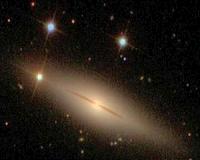 New Cause For Supernova Explosion Identified  NASA SDO Begins Five-Year Mission Of Discovery  Instant online solar energy quotes Solar Energy Solutions from ABC Solar |
.. |
|
|
Free Space, Earth, Energy And Military Newsletters - Delivered Daily |
|
|
. |
 Blast from the past: a new type of exploding star
Blast from the past: a new type of exploding starParis (AFP) May 19, 2010 Astronomers have discovered a new type of exploding star that spews huge quantities of calcium and defies the two known categories of supernovae, according to a pair of studies released Wednesday. Only a handful of these novel star bursts have been spotted over the last few years, but they could explain the abundance of calcium observed in galaxies like our own Milky Way, the researchers said. They could even account for the calcium present in our bones, and in all life on Earth. Up to now, ... read more |
| The contents herein, unless otherwise known to be public domain, are Copyright 1995-2010 - SpaceDaily. AFP and UPI Wire Stories are copyright Agence France-Presse and United Press International. ESA Portal Reports are copyright European Space Agency. All NASA sourced material is public domain. Additional copyrights may apply in whole or part to other bona fide parties. Advertising does not imply endorsement, agreement or approval of any opinions, statements or information provided by SpaceDaily on any web page published or hosted by SpaceDaily. Privacy statement |
| Previous Issues | May 24 | May 21 | May 20 | May 19 | May 18 |